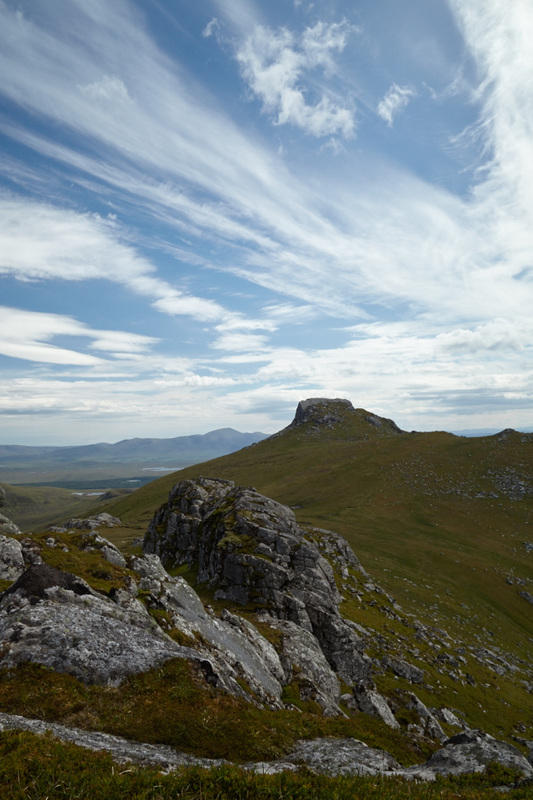1/7/2016 Kevin Arrowsmith LRPS
My first impressions of the NiSi products were extremely positive but how would they perform in practice? I've been out and about putting them to the test.
The first thing I've come to do is to leave the 77mm reducer attached to the adaptor ring and holder. This means that when not in use, I can still protect my lens with my standard 77mm lens cap. Otherwise, I would be looking to purchase an 82mm lens cap. In general, I have found that the system fits beautifully together with the spring loaded knob mechanism providing a positive latch and confidence that nothing is likely to come adrift. As mentioned in Part 1, the fit of the filters in the holder is quite tight but I tend to fit these 'off the camera' anyway and then adjust as necessary. One thing which is most noticeable is how much less susceptible to dust these glass filters are compared to resin types. I have found in the past that the very action of cleaning resin filters simply generates more static and hence attracts more dust. With the NiSi filters, a very occasional wipe with a lens cleaning cloth was all that was needed, and static just wasn't an issue.
The first thing I've come to do is to leave the 77mm reducer attached to the adaptor ring and holder. This means that when not in use, I can still protect my lens with my standard 77mm lens cap. Otherwise, I would be looking to purchase an 82mm lens cap. In general, I have found that the system fits beautifully together with the spring loaded knob mechanism providing a positive latch and confidence that nothing is likely to come adrift. As mentioned in Part 1, the fit of the filters in the holder is quite tight but I tend to fit these 'off the camera' anyway and then adjust as necessary. One thing which is most noticeable is how much less susceptible to dust these glass filters are compared to resin types. I have found in the past that the very action of cleaning resin filters simply generates more static and hence attracts more dust. With the NiSi filters, a very occasional wipe with a lens cleaning cloth was all that was needed, and static just wasn't an issue.
Circular polariser
One aspect of the system which I was particularly interested in was the polarising filter. As mentioned previously, this ultra slim filter screws directly into the adaptor ring and ahead of any other filters. I must say, this seemed a little fiddly at first, the filter is so slim that there's not much to get hold of without touching the glass. However, with practice, this wasn't an issue and soon became second nature. The filter rotates freely using the knurled wheels and this provides a wide and gradual range of adjustment. Shooting at midday is always a challenge, but from the following images it can be seen how the polariser gives superb saturation and clarity to the sky and clouds and also brings out the detail in the foreground rocks. The slight reduction in light transfer of the polariser was sufficient to prevent the highlights being 'blown-out'
Without polariser
With polariser |
ND1000 10 Stop Neutral Density
I have been looking forward to using the ND1000 10 stop ND filter and an outing to Strathbeag with one of my 'Learn in the Landscape' students was an ideal opportunity. I had read many references to how colour neutral this filter was and I was keen to test this for myself.
These are jpg exports of the original RAW file. No adjustments have been applied except for levels as the light was changing rapidly between shots. It is clear to see that both the greens of the background grass and foliage and the tones in the foreground rocks are consistent between both images. I have found the same to be true of results using the graduated neutral density filters, not having to apply colour correction is a huge bonus - as I have often said, I much prefer to be out in the landscape taking photographs than sat in front of a screen!
In conclusion
Testing the NiSi filter system has been an interesting experience and I'll be adding further examples using the graduated ND filters in coming weeks. In a market dominated by a small number of manufacturers, could this recent addition bring anything new to the party? The answer is a definite yes. Yes, the quality and presentation of the product is impressive but this is matched by the optical quality of the filters. I have used the filters extensively in some challenging situations including mountain and coastal locations. They have proven to be scratch and dust resistant, and have an impressive colour accuracy. If you are planning on adding to or replacing your filter collection, I would recommend that the NiSi system is included in your shortlist.
Thank you to NiSi for providing the products for evaluation. NiSi filters are available to order from Amazon UK.
Products tested:
NiSi V5 100mm filter holder with circular polariser
Soft nano IR GND4(0.6)
Hard nano IR GND8(0.9)
Reverse nano iR GND8(0.9)
Nano IR ND1000(3.0)
Thank you to NiSi for providing the products for evaluation. NiSi filters are available to order from Amazon UK.
Products tested:
NiSi V5 100mm filter holder with circular polariser
Soft nano IR GND4(0.6)
Hard nano IR GND8(0.9)
Reverse nano iR GND8(0.9)
Nano IR ND1000(3.0)



Comments
Post a Comment